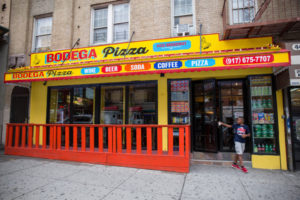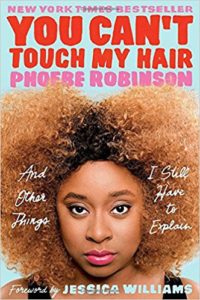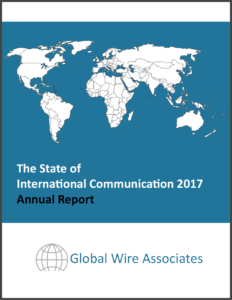Bodegas, Gentrification, and Social Experiences
 The recent controversy around “Bodega” is just the latest example of what is wrong with our society today. Two Google Bros came up with the idea of “disrupting” the convenience store industry by strategically placing gentrified vending machines in apartment lobbies, gyms and other places when humans can have limited face-to-face interaction. All you need is an app to unlock the machine and an inside camera will automatically snap a picture of what you are taking and charge your credit card. There are currently 50 Bodegas in the West Coast and the Bros hope to expand it to New York City in the near future.
The recent controversy around “Bodega” is just the latest example of what is wrong with our society today. Two Google Bros came up with the idea of “disrupting” the convenience store industry by strategically placing gentrified vending machines in apartment lobbies, gyms and other places when humans can have limited face-to-face interaction. All you need is an app to unlock the machine and an inside camera will automatically snap a picture of what you are taking and charge your credit card. There are currently 50 Bodegas in the West Coast and the Bros hope to expand it to New York City in the near future.
“The vision here is much bigger than the box itself,” Bodega founder Paul McDonald says. “Eventually, centralized shopping locations won’t be necessary, because there will be 100,000 Bodegas spread out, with one always 100 feet away from you.”
It’s funny because I didn’t know there was a pressing need to get rid of real bodegas and make convenience stores more convenient. But when you read more into this story, it seems like this service has a more sinister backstory that would actually hurt, not help society.
Mind you; I don’t have anything against technology and innovation. As a matter of fact, I make a living off of it as a web designer, content strategist, and multimedia journalist. I also use Amazon Prime and Uber regularly. However, I do appreciate traditional social experiences, and I think we are losing them little by little every day.
I like going to my nearby convenience store or supermarket not just because it has my favorite type of candy, popcorn, and other necessities, but I like chatting it up with the owner about the weather or other local gossips. Like bodegas, supermarkets, malls, restaurants, and other gathering spaces, social experiences are an important part of community building. I work from home most days so I feel like it is important for me to get out the house at least once a day to interact face to face with others in stores and other places. I also do a lot of volunteer work in my community because it is a great way to connect with my neighbors on shared interests. You can not do that with a gentrified vending machine!
Unfortunately, I think this Bodega service will take off because it is catering the two specific groups who for better or worse are changing our society.
- Upper-middle class white people moving into gentrified areas who don’t want to interact with the lower income people of color who already live in the areas.
- Socially inept millennials who don’t know how to communicate with other human beings without a smartphone.
Both of these groups are moving into many urban areas around the country, including my neighborhood in Boston. I live in a mixed-income, racially diverse community, where you can see some of this tension between races, class, and age.
I remember going to a community meeting a few years ago and the audience was broken up into smaller groups to discuss the future of our neighborhood. This 20-something white woman who just moved to Boston began to speak to my group that just so happen to be comprised of women only and I was the only person of color about the “troubles” she has had with obtaining basic necessities in the neighborhood like feminine products. She went on to say that she once had her menstrual period start early unexpectedly while she was at home and realized she had run out of tampons.
“I had to get into my car and drive all the way to Target to buy tampons, which is 20 minutes away,” she said in a Valley Girl Becky tone. “Isn’t that crazy.”
Yeah, I would say so myself. This woman lived one block away from a Dominican-owned convenience store that I know for sure sells feminine products. She could have walked there, purchased her tampons, and got back home within five minutes! When I told her this, she said, “Oh, I didn’t know what they sold there and I’ve never been in there,” Valley Girl Becky replied. “I thought they only sold, like, ethnic things.”
“Tampons aren’t ethnic and it says convenience store on top of the front door, so I am sure you can go in there the next time you are in need,” I said.
Another white person in the group, noticing the tension from this exchange, quickly changed the subject. While they continued their conversation, I was thinking to myself, even if she didn’t want to go into that particular convenience store, Valley Girl Becky could have gone into the local Family Dollar or the small supermarket a few blocks away, or even the dozens of CVS or Walgreens stores between her house and Target to get her tampons. But, no, I guess there are too many ethnics in those establishments for her. Luckily for her (if she still lives in the neighborhood) a Target is actually coming to the neighborhood next year. Hopefully, it won’t employ any ethnics there so she can shop for her tampons in peace because she will have to continue driving across town to avoid those people.
Just last week I was in New York for UN Week, and I happen to be up in Harlem for African-American Day parade. Harlem has seen a lot of changes because of gentrification in recent years, including the opening of the new Whole Foods on 125th Street. I thought it was really cool to watch the parade on 7th Avenue, the food vendors selling West Indian and African foods and the celebration of the community’s rich, black culture. As I walked towards the Whole Foods, I saw tons of white folks walking fast, as if they didn’t want any part of the parade. I also saw white patrons in the outdoor seating for many of the new restaurants on Lenox Avenue who looked completely oblivious to what was happening and just kept looking at their phones. That was kind of sad actually that none of these new white residents had any interest in learning more about the community they live in.
I guess the new Bodegas will be coming to Harlem and my neighborhood next!


